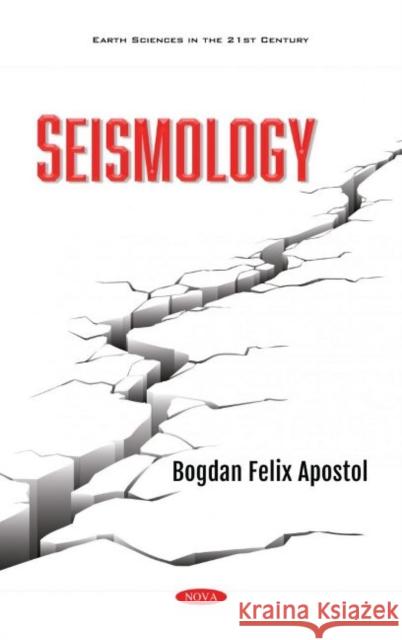Seismology » książka
Seismology
ISBN-13: 9781536184921
The book offers a comprehensive physical theory of the earthquakes. The presentation level is rather mathematical, but thorough physical explanations are provided everywhere. We do not know where and when and how great an earthquake occurs. The seismic events have a statistical character. Statistical Seismology is discussed extensively in this book, centered on the famous Gutenberg-Richter, Omori and Bath statistical laws. The earthquakes may be correlated, foreshocks may herald a main shock, aftershocks may follow a main shock. The pattern of such correlations, their extension in time and magnitude are discussed in this book. The earthquakes are produced by forces acting for a short time in a localized focal region placed inside the Earth. These forces give rise to elastic deformations and elastic waves, which arrive at Earth' surface as earthquakes. The nature of these forces and their effects are discussed in this book. Any earthquake begins by a feeble tremor, the so-called P and S seismic waves, followed by a large, main shock, which looks like a wall with a long tail. This book explains why it is so. We cannot predict the occurrence of the earthquakes. But we can know something about them. For instance, there exist seismographs, a sort of pendulums, which record the ground displacement. There exist agencies which tell us the earthquake magnitude, its energy, location, fault slip, by reading the seismograms. We may wish to get such information by ourselves, almost in real time, knowing the seismograph recordings, to be independent of the seismological agencies. This book teaches us how to do that. The book describes the accumulation of the seismic energy in the focal region, its release, the shape and strength of the ground displacement. It is shown that the seismic faults may give rise to rather complicated tensorial forces, which account both for the static deformations of the Earth's surface and for the seismic waves produced in an earthquake. A model of energy accumulation in the earthquake focus is formulated and used to derive the statistical Gutenberg-Richter laws. These laws are used to analize the statistics of the seismic events in Vrancea, Romania, as an example. A special emphasis is given to the short-term seismic activity. The book introduces the point tensorial force of the seismic faults and employs it to present both the static deformation of the Earth's crust in epicentral regions and the seismic waves and the main shock which appear on any typical seismogram. This later point is the solution of the so-called Lamb seismological problem. The book describes the determination of the seismic-moment tensor, earthquake magnitude, the volume of the focal region, the duration of the seismic activity in the focus, the fault orientation and the fault slip from measurements of the seismic waves at the Earth's surface. This is the solution of the inverse seismological problem. A special point is a qualitative estimation of these parameters which can be practised by everyone in real time. The book presents the vibrations of the Earth viewed as a solid sphere and the vibrations of an elastic half-space. The static deformations of the elastic half-space under the action of point forces are also included. Finally, earthquake correlations, Bath's law and earthquake entropy are discussed. The book is an original monograph of Seismology, intended for the use of the students, researchers and the public who wish to become familiar with the physics and mathematics of the earthquakes. It provides the understanding of the earthquakes and specific knowledge we may have of them.











